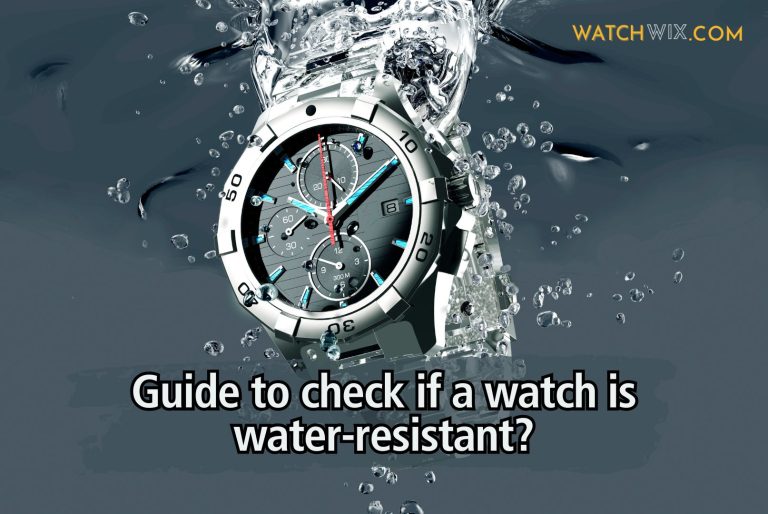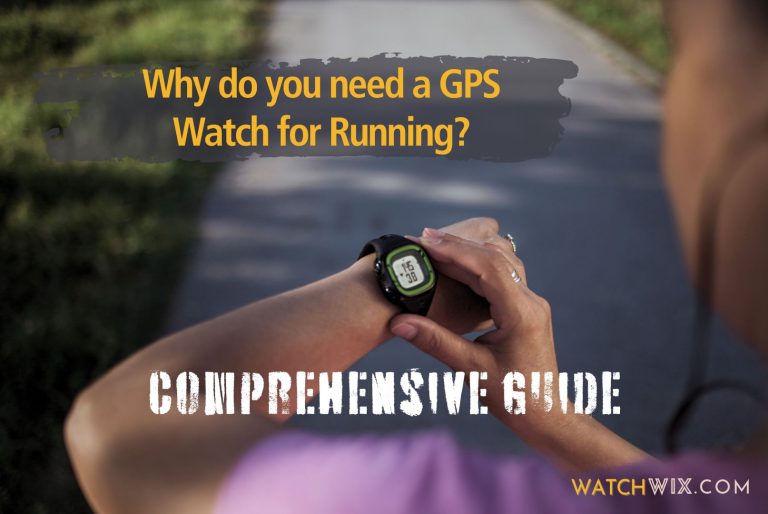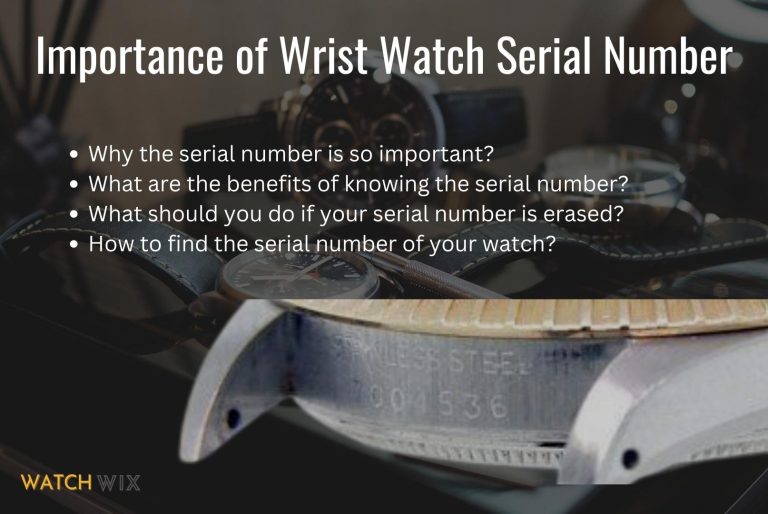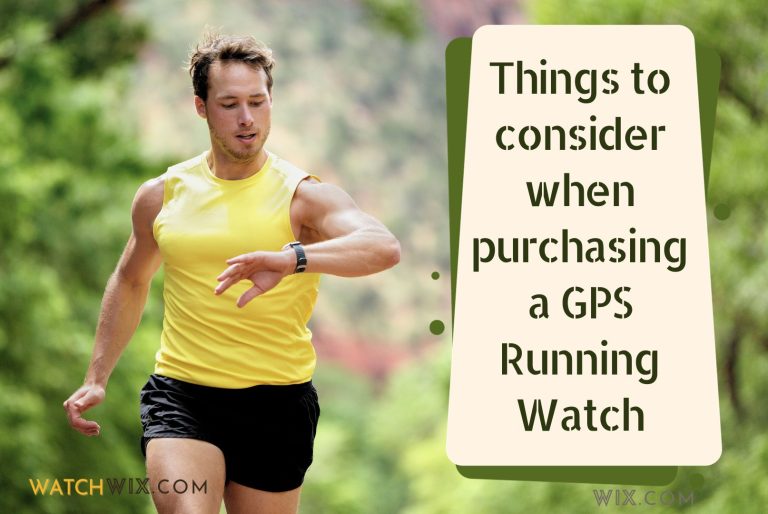12 Reasons You Should Buy A GPS Running Watch
A GPS watch is very helpful for runners like you due to its amazing capabilities that cater to your needs. The most common capability is that this watch provides accurate and real-time tracking of essential running metrics, such as distance and pace. GPS watches offer a good number of features that enhance the overall running experience, which you should buy one as a runner, as given the reasons below,
12 Reasons Why You Should Buy A GPS Running Watch
Investing in a GPS running watch is a decision that can significantly benefit your running experience and overall fitness journey. Here, we’ll delve into the detailed reasons why you should consider buying a GPS running watch:
- Precise Distance and Pace Tracking: GPS running watches offer highly accurate distance and pace measurements. These data points are important for tracking your progress over time to ensure you meet specific goals and maintain a consistent pace during your runs. Having real-time feedback on your running performance is invaluable whether you’re a beginner or a seasoned runner.
- Goal Setting and Monitoring: GPS watches allow you to set specific running goals like distance, time, or pace targets. You can monitor your progress and receive alerts or notifications when you’re off track. Achieving these goals can be a powerful motivator to drive you to push your limits and improve your fitness.
- Route Mapping: You can accurately map and save your running routes with the help of a GPS watch. This feature is particularly useful for exploring new areas, avoiding getting lost, and revisiting favorite routes. It adds variety to your runs and helps you explore different terrains.
- Data Analysis: Many GPS watches offer advanced data analysis features. You can review your performance over time, and identify trends, strengths, and areas for improvement. This information is vital for fine-tuning your training program and optimizing your running strategy.
- Heart Rate Monitoring: Some GPS watches come with built-in heart rate monitors or are compatible with chest straps. Monitoring your heart rate helps you gauge the intensity of your workouts and ensures you’re training in the right heart rate zones for your goals.
- Workout Variety: GPS watches often have workout modes for various activities beyond running, such as cycling, swimming, or indoor exercises. This versatility makes them valuable tools for cross-training and staying active in different ways.
- Motivation and Accountability: Tracking your runs and witnessing your progress can provide a significant motivational boost. Many GPS watches offer features like virtual competitions, challenges with friends, or community events, fostering a sense of accountability and making your runs more engaging.
- Safety Features: Some GPS watches include safety features such as emergency assistance notifications or location sharing with trusted contacts. This ensures your well-being during solo runs, especially in less familiar or remote areas.
- Weather Information: Advanced GPS watches can provide real-time weather updates, helping you plan your runs according to current conditions and avoid running into unfavorable weather.
- Sleep and Recovery Tracking: Certain GPS watches offer sleep tracking and recovery metrics. This helps you optimize your rest and recovery, ensuring you’re adequately recuperating from your workouts, reducing the risk of overtraining, and enhancing your overall well-being.
- Battery Life: GPS watches are designed for endurance, with many models offering long battery life. This ensures that your device can last through extended runs, races, or even multi-day adventures.
- Data Integration: Most GPS watches allow you to sync your data with fitness apps and platforms. This integration enables you to manage and analyze your performance and training history comprehensively.
In conclusion, a GPS running watch is not just a timekeeping device but a comprehensive fitness tool. It provides accurate tracking, helps you set and achieve goals, enhances your safety, and offers a wealth of data to optimize your running and overall fitness journey. A GPS running watch is an investment that can empower you to reach new heights and enjoy a more fulfilling running experience if you’re serious about your running or fitness goals.
What is a GPS Watch
A GPS watch, or GPS running watch, is a specialized wearable device designed for athletes and fitness enthusiasts, especially runners. Its primary function is to accurately track outdoor activities using GPS technology.
GPS watches provide features such as distance tracking, pace calculation, and route mapping. They often include additional sensors for heart rate monitoring and may offer advanced running metrics like cadence and stride length. These watches are dedicated to fitness tracking and have a strong focus on performance data for activities like running, cycling, and swimming.
Features and their usefulness of a GPS Running Watch
Below are some key features of a GPS Running Watch and their usefulness for you to make a better-informed decision to buy one or not.
| GPS Running Watch Feature | Usefulness |
| Distance tracking: Tracks the total distance you have run. | This is a basic feature that is essential for tracking your progress and improvement over time. |
| Pace tracking: Tracks your average pace per mile/kilometer. | This is another important metric for tracking your progress and improvement. It can also be used to help you maintain a consistent pace during your runs. |
| Time tracking: Tracks the total time you have spent running. | This is useful for tracking the duration of your runs and for tracking your overall fitness level. |
| Route tracking: Tracks the route you have taken. | This can be helpful for planning new routes or for tracking your progress on a specific route. |
| Heart rate tracking: Tracks your heart rate throughout your run. | Heart rate is a key metric for tracking your fitness level and performance. Tracking your heart rate can help you to avoid overexertion and to ensure that you are training at the right intensity. |
| Cadence tracking: Tracks the number of steps you take per minute. | Cadence is an important metric for running efficiency. Tracking your cadence can help you to improve your running form and to avoid injuries. |
| Elevation gain tracking: Tracks the total elevation gain you have experienced during your run. | This is a key metric for trail runners and other athletes who train in hilly terrain. Tracking your elevation gain can help you to track your progress and to avoid overexertion. |
| Training plans: Pre-loaded training plans that can help you train for a specific race or event. | Training plans can help you to stay on track and to ensure that you are training at the right intensity. |
| Music storage: Built-in music storage so you can listen to music while you run without having to carry your phone. | This can be helpful for avoiding distractions and for keeping you motivated during your runs. |
| Smartwatch features: Notifications, weather reports, and calendar alerts. | Smartwatch features can be helpful for staying connected and informed while you are on the go. |
What should you consider when buying GPS Running Watch?
There are several important factors to consider when purchasing a GPS-running watch to ensure that you select the right device for your specific needs and preferences. Below are the must-checks to help you make an informed decision:
- GPS Accuracy: The primary function of a GPS-running watch is accurate location tracking. Look for a watch that uses multiple global navigation satellite systems (GNSS) like GPS, GLONASS, and Galileo to ensure precise and reliable tracking.
- Battery Life & Solar Charging Capability: Consider your typical running habits and choose a watch with a battery life that can meet your needs. Some watches offer long battery life in GPS mode, while others may require frequent charging. Also, try to get a watch with solar charging capability to avoid the hassle of frequent charging.
- Display: Check the display quality, size, and readability under various lighting conditions. A larger, high-resolution display can be beneficial for quickly checking your stats during a run.
- Design and Comfort: Consider the watch’s design, size, and weight. A comfortable and durable watch is essential since you will wear it during your runs. Choose a watch that suits your style and wrist size.
- Water Resistance: Ensure that the watch is water-resistant if you plan to use it in wet conditions or for swimming. Water resistance is typically measured in meters (e.g., 50m, 100m), indicating the watch’s ability to withstand water pressure.
- Heart Rate Monitoring: Look for built-in heart rate monitoring, and ideally, optical sensors for continuous tracking. Some models even offer advanced heart rate features like HRV analysis.
- Advanced Running Metrics: Consider whether the watch provides advanced running dynamics, such as cadence, stride length, ground contact time, and vertical oscillation. These metrics can help you improve your running form and efficiency.
- Training Features: Check if the watch offers training features like customizable workouts, pace alerts, virtual partners, and interval training. These features can be invaluable for structured training plans.
- Data Storage and Connectivity: Ensure that the watch can store and sync data with a mobile app or computer. Cloud syncing and compatibility with popular fitness platforms like Garmin Connect, Strava, or TrainingPeaks are advantageous.
- Smartphone Connectivity: Look for features like smartphone notifications, music controls, and the ability to receive calls or texts directly on the watch. This can be convenient for staying connected during your runs.
- App Compatibility: Research whether the watch integrates with the fitness apps and services you already use, ensuring a seamless experience.
- Build Quality: Assess the build quality of the watch, including the quality of materials and durability. Consider the ruggedness if you’re into trail running or other outdoor activities.
- Price: Set a budget, but be prepared to invest in a quality GPS running watch that meets your requirements. Prices can vary widely based on the watch’s features and brand.
- Updates and Support: Check if the manufacturer regularly provides software updates and offers good customer support. This can ensure the watch remains up-to-date and any issues are resolved promptly.
- Reviews and Recommendations: Read reviews from other runners and seek recommendations from the running community. Real-world experiences can provide valuable insights into a watch’s performance and usability.
How Does a GPS Running Watch Work?
The operation of a GPS running watch can be described as follows:
When you begin your run, you activate the GPS running watch, and it starts to establish a connection with satellites in space. This connection is facilitated by the watch’s GPS (Global Positioning System) receiver, which communicates with a network of satellites orbiting the Earth. The watch’s software then triangulates signals from multiple satellites to pinpoint your precise location on the planet.
As you start running, the GPS receiver continuously captures your position, creating a breadcrumb trail of data points. These data points are connected, and the watch calculates the distance you’ve covered based on the changes in your position. This real-time distance measurement is displayed on the watch’s screen and it will allow you to monitor your progress as you run.
In addition to distance, the GPS watch also records your pace, which is the speed at which you’re running per unit of distance (usually minutes per mile or kilometers). As you run, the watch tracks your current pace, average pace, and sometimes even splits, which show your pace for specific segments of your run.
Elevation tracking is another important aspect of GPS running watches, especially for those running in hilly or mountainous terrain. The watch uses satellite data to calculate changes in your elevation during your run, providing you with information about ascents and descents.
Many GPS running watches also incorporate heart rate monitoring. This is typically done through optical sensors on the back of the watch that detect changes in blood flow under your skin. By continuously measuring your heart rate, the watch offers insights into your effort level and helps you optimize your training intensity.
Advanced GPS running watches can offer additional running metrics, including cadence (steps per minute), stride length, ground contact time, and vertical oscillation. These metrics provide insights into your running form and efficiency, helping you make adjustments to improve your performance.
Once your run is complete, the GPS running watch stores the data for that workout, including distance, pace, elevation, heart rate, and any additional metrics collected during the run. This data can be reviewed on the watch itself, but it’s often synced to a mobile app or computer, where you can analyze your performance, set goals, and track your progress over time.





